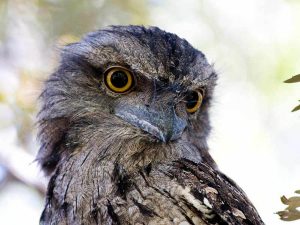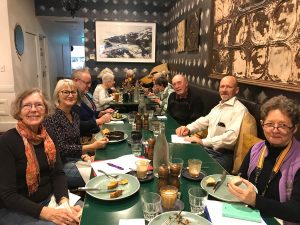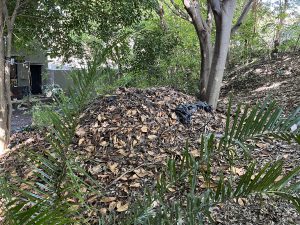Glebe Forest Lodge 10th Annual Spring Bird Survey 2022
By Judy Christie, Bulletin 9/2022, November 2022

The tenth Glebe Forest Lodge spring bird survey was successfully held on 23 October despite overcast conditions with a predicted 95% chance of rain. Eighteen participants set off early on Sunday morning to do a ‘snapshot’ survey counting birds in ten different locations. Sightings were made across Glebe’s parks, trees and waterways as well as on roofs, TV antennae, chimney pots, footpaths and busy traffic intersections.
A total of 674 birds were seen, less than in 2021, likely due to the ongoing wet weather although the relative numbers were similar. More impressively, 33 different bird species were identified, equally the highest diversity of species recorded over the last ten years.
The two most common birds are again the native Noisy Miner and the Rainbow Lorikeet. The Noisy Miner continues to aggressively dominate all our open spaces and the Rainbow Lorikeet is likely to be announced as the most common urban bird in Australia in the results of Birdlife Australia’s recent Aussie Backyard Bird Count. Our Magpies are also breeding up, selecting tall trees for their nests while two other increasing native species are the Grey Butcherbird and Laughing Kookaburra. Both these species, with characteristic calls, can be predatory on nestlings of other birds.
It will be no surprise to most residents of Glebe and Forest Lodge to see that the Brush Turkey has now made our spring survey as well. A large flock of Sulphur-crested Cockatoos was more of a surprise as usually only one or two are seen on our annual surveys. A Tawny Frogmouth was a great find and although nesting at the Annandale end of the park, they may well frequent our street lights for insects over the summer nights.
The survey took place at high tide so what better place for two White-faced Herons to find a high tide roost than on a boat in the Bay. The habitat values of the Johnstons Creek corridor continue to improve and though not seen on Sunday, the previous day at low tide two Striated Herons were seen feeding near the mouth of the creek. A Willie Wagtail was also calling from a barge in Rozelle Bay but has been recently seen along the canal as well.
The busy intersection around Ross St and St Johns Rd appears to be an unusual birding ‘hotspot’ with breeding Tree Martins and Red Wattlebirds seen and heard in the vicinity. The absence of Noisy Miners and other ‘bossy’ birds may be a contributing factor.

Our surveyors are becoming more experienced with bird species identification and familiarity with their sites and the likely species to expect, enabling accurate reporting. In terms of future surveys, an earlier start may help to avoid disturbance from people and dogs in some of the more popular parks and grassy areas frequented by Willie Wagtail and sometimes parrots.
Once again, we had a birdwatchers’ breakfast celebration at Esca to conclude our morning’s activities. Thank you to all volunteers who helped to make a very successful and enjoyable spring morning. A full report of the specific locations and bird numbers is available from the Blue Wren Subcommittee.
Glebe’s Newest Builders?
by Helen Randerson, Bulletin 9/2022, November 2022
Have you spotted a brush turkey mound in Glebe? Two brush turkeys have recently been seen building their characteristic mounds in Glebe and Forest Lodge.

You may have spotted the male bird carefully tending his mound of vegetation and regularly checking the mound’s temperature, to give the eggs inside the mound the best chance of survival.
Brush turkeys are protected species under the Biodiversity Conservation Act 2016 and the population of brush turkeys is now recovering in areas where they have not been seen for many decades. So, it’s important not to try and destroy a mound or chase a brush turkey away.
A brush turkey is easily recognisable by its dark blue-black plumage, bright head colours and general turkey-like appearance.
We can plan our gardens with brush turkeys in mind by providing mulch in an area of heavy shade where there are one or more large trees nearby and by avoiding feeding them.
There is abundant advice available on how we can live with and accommodate brush turkeys in our gardens and public spaces as they newly discover the delights of living in Glebe.
Further information: www.environment.nsw.gov.au/topics/animals-and-plants/native-animals/native-animal-facts/australian-brush-turkey;and www.qld.gov.au/environment/plants-animals/animals/living-with/brush-turkeys.








There are no comments yet. Please leave yours.